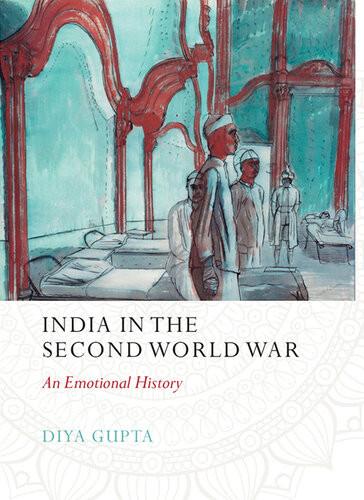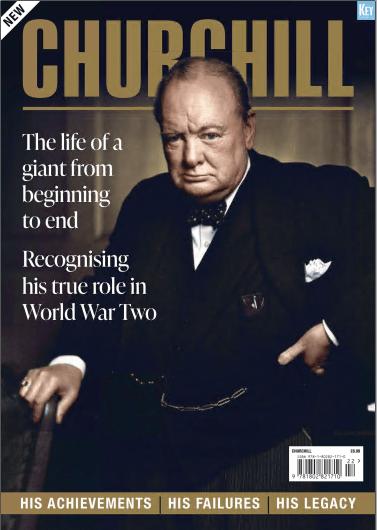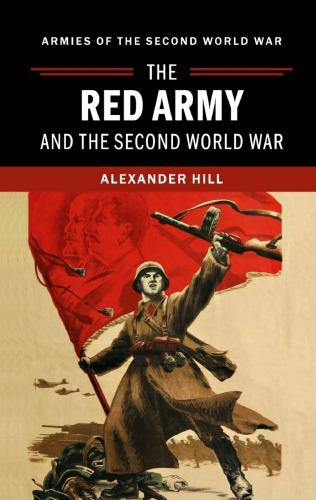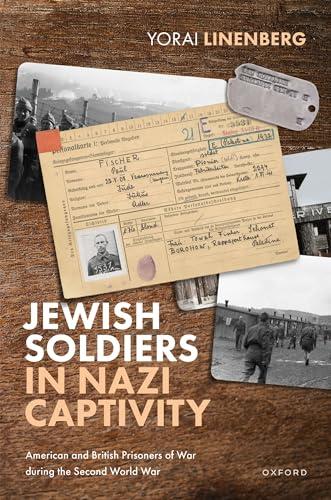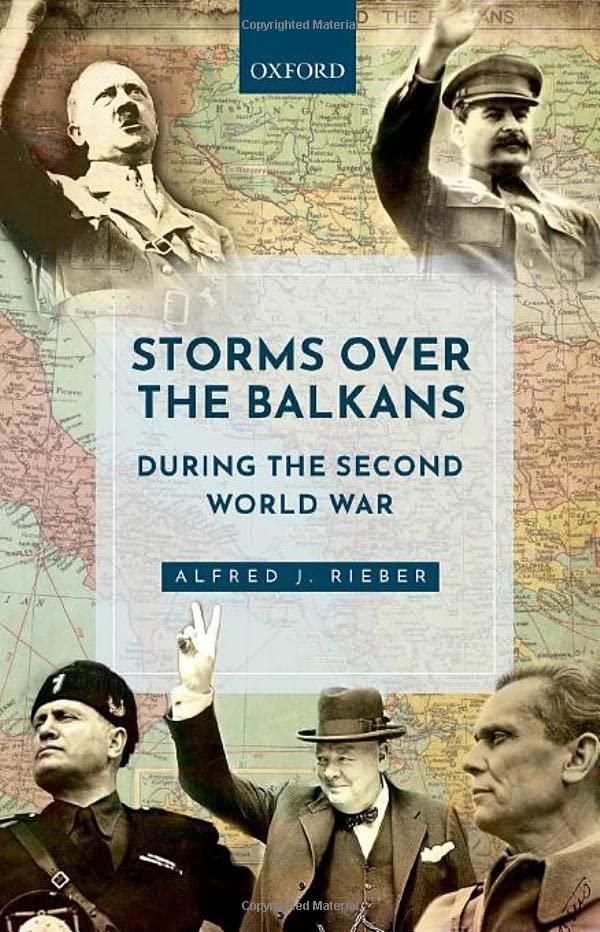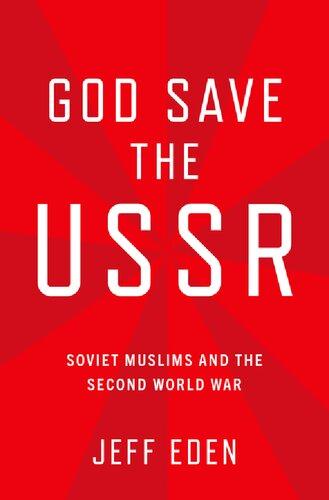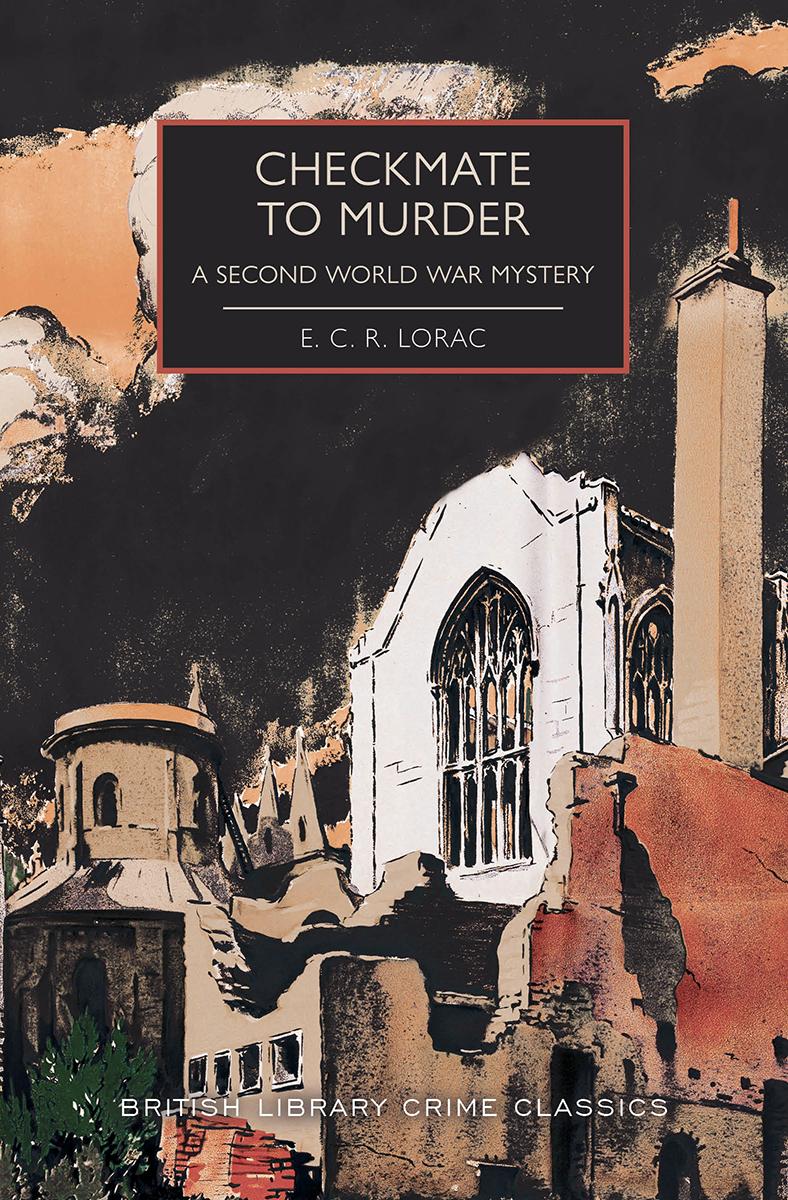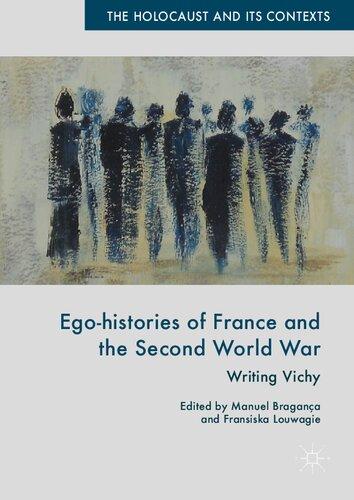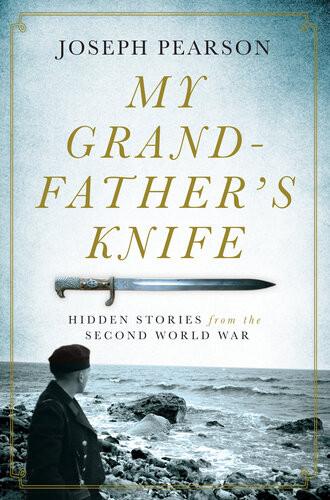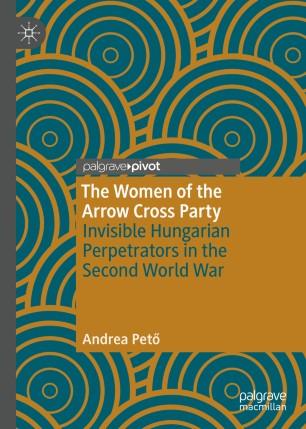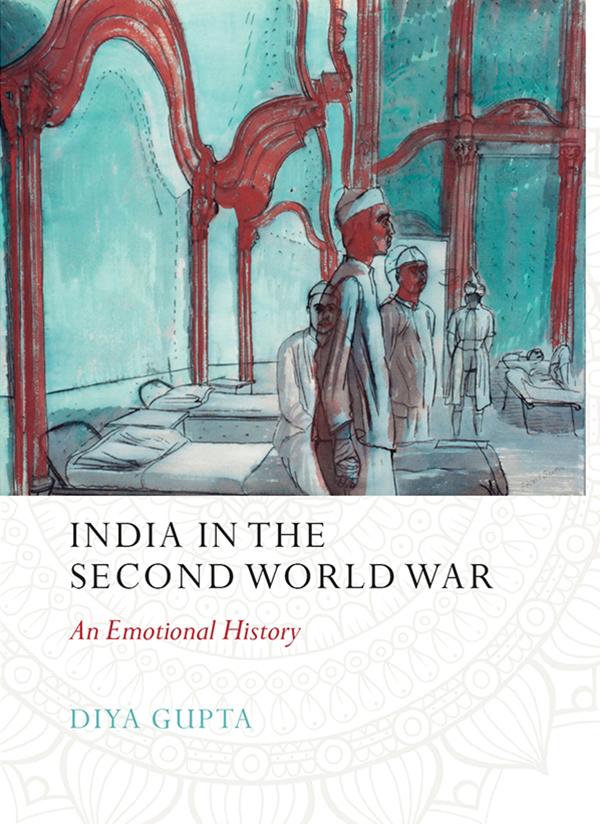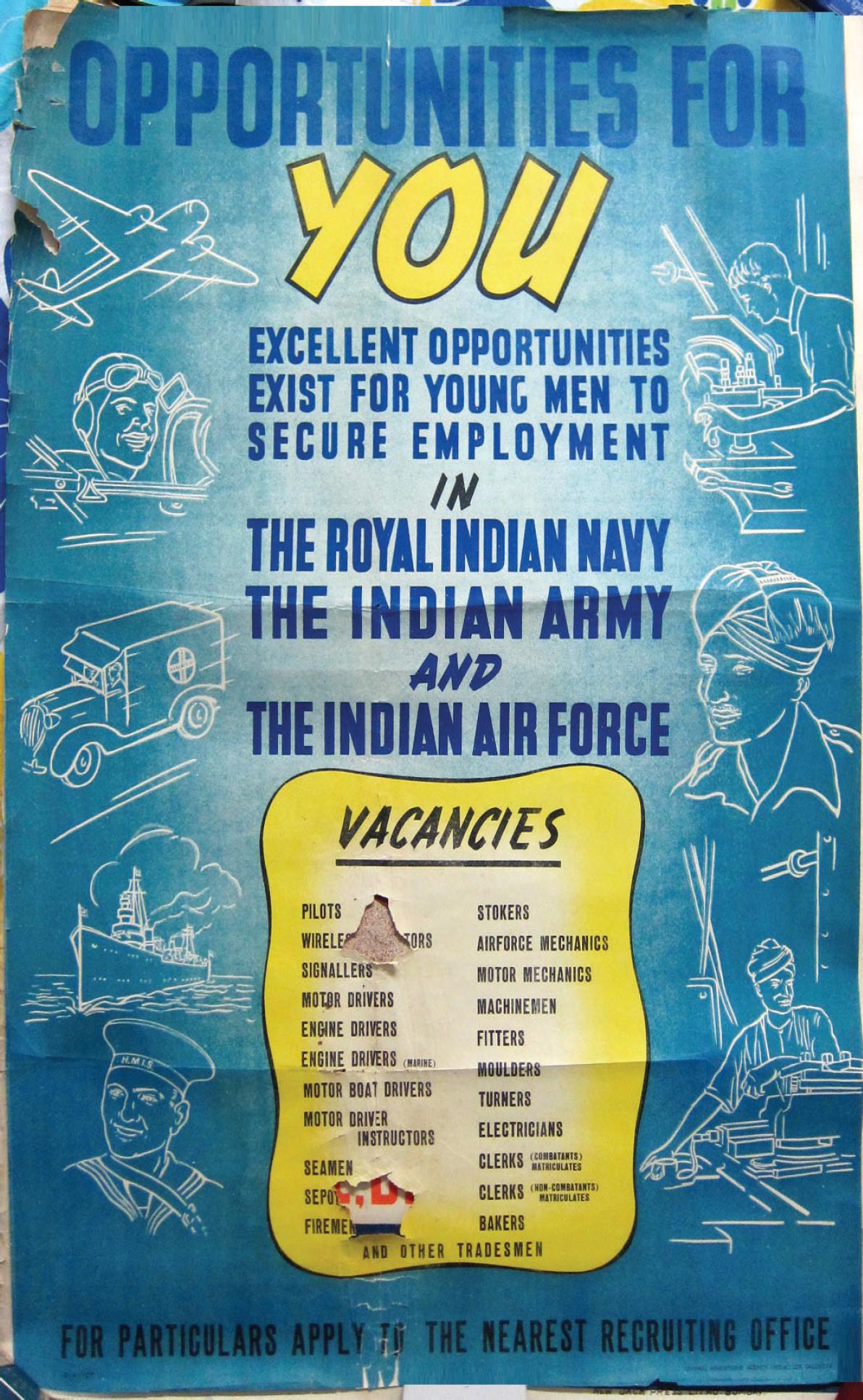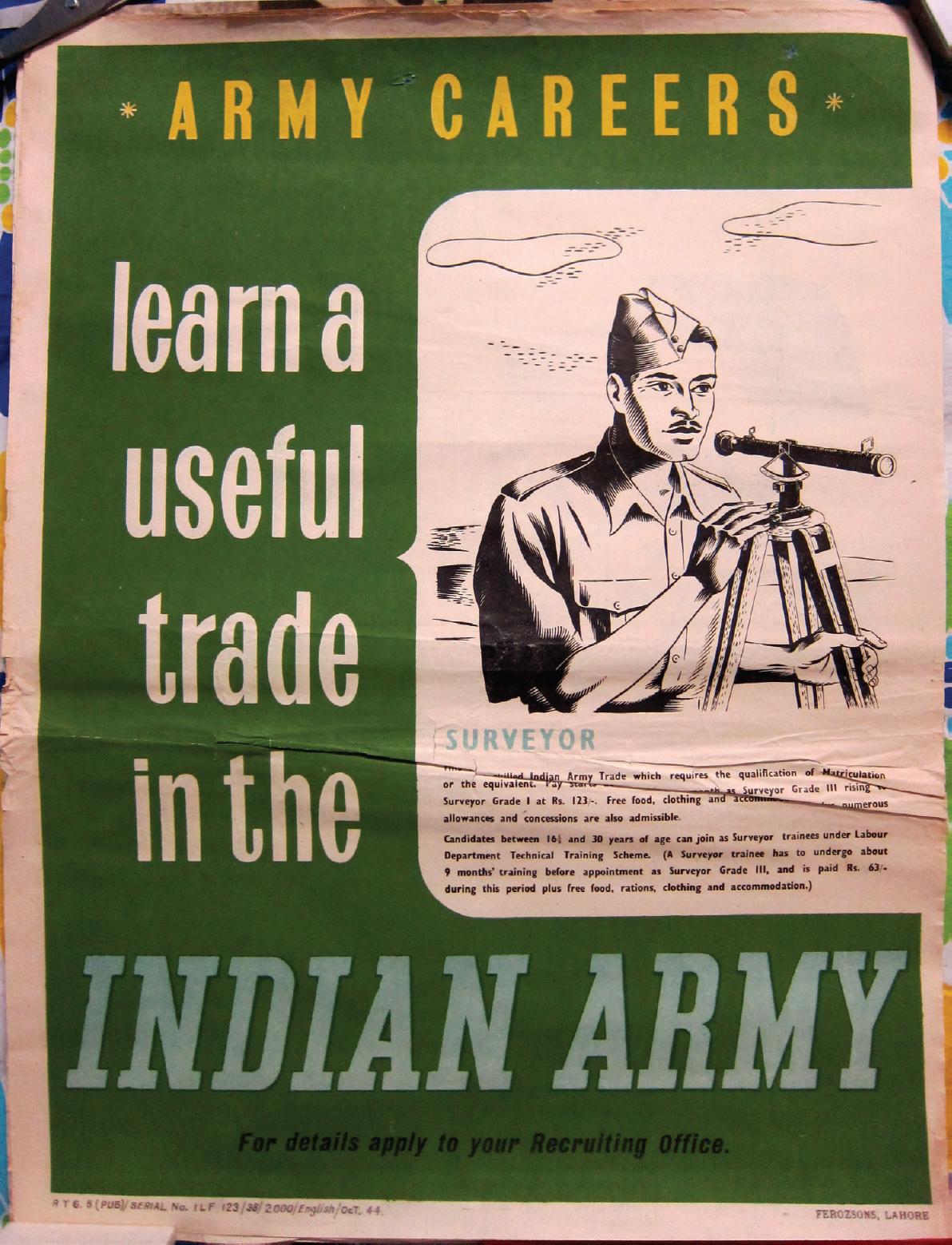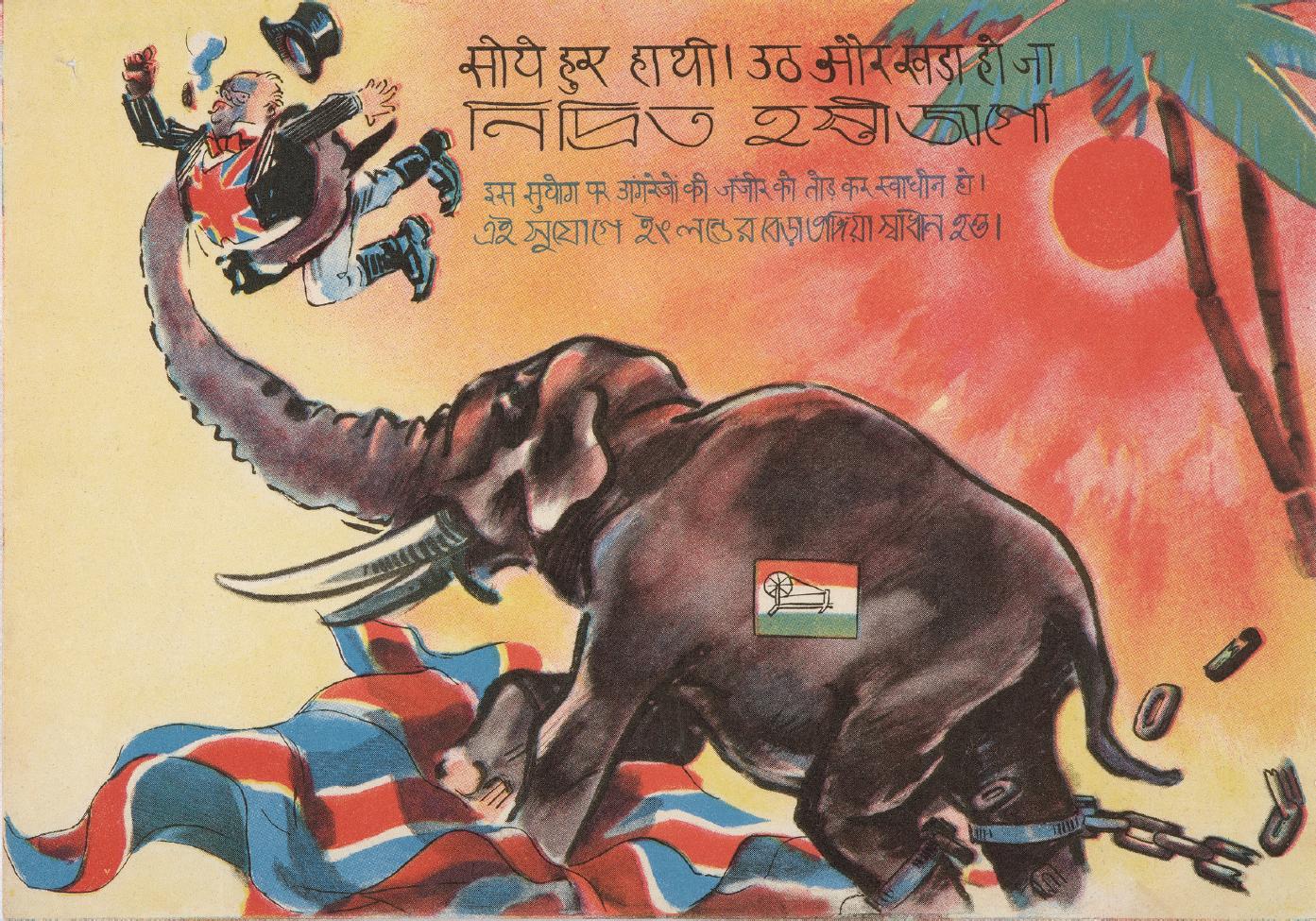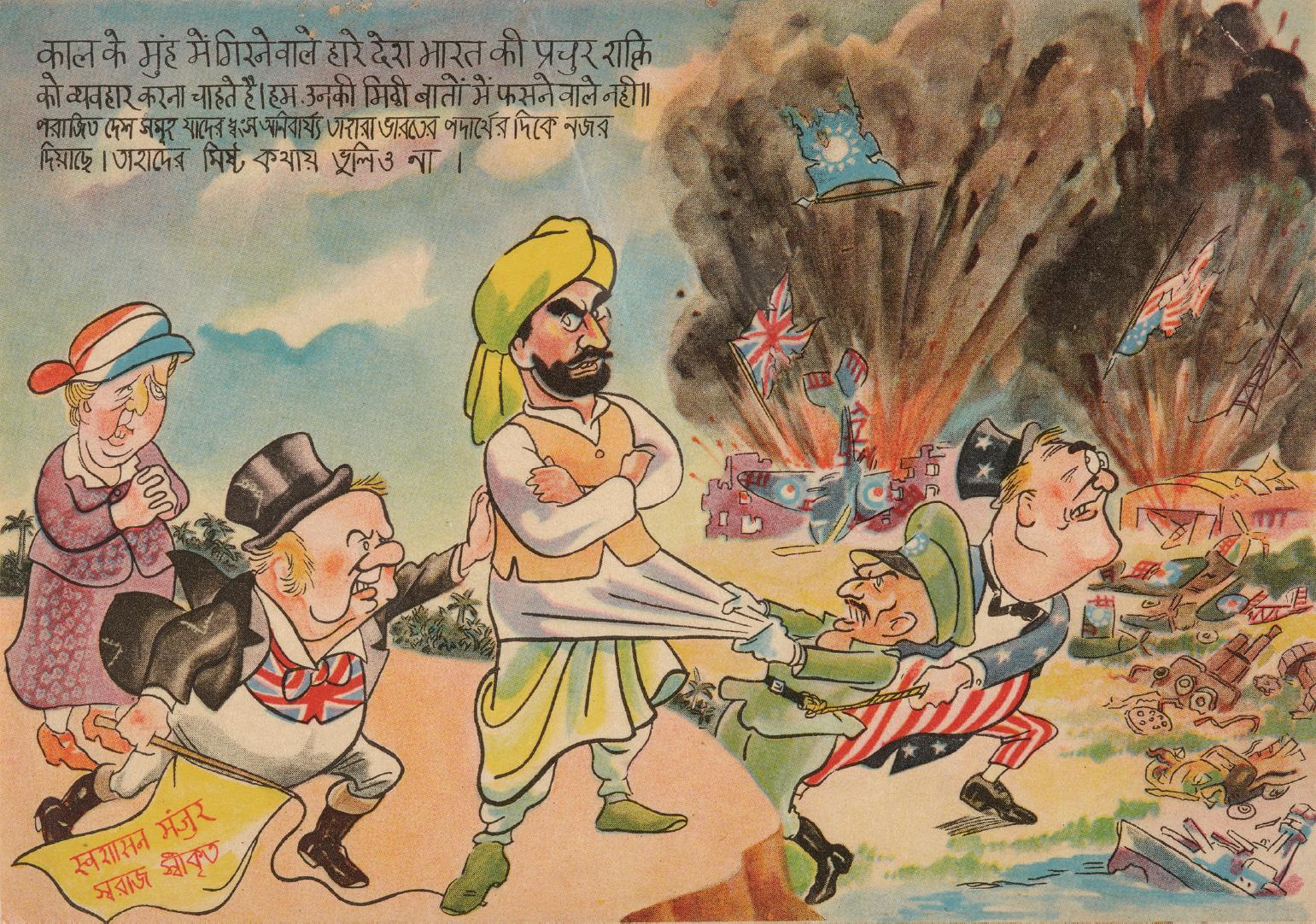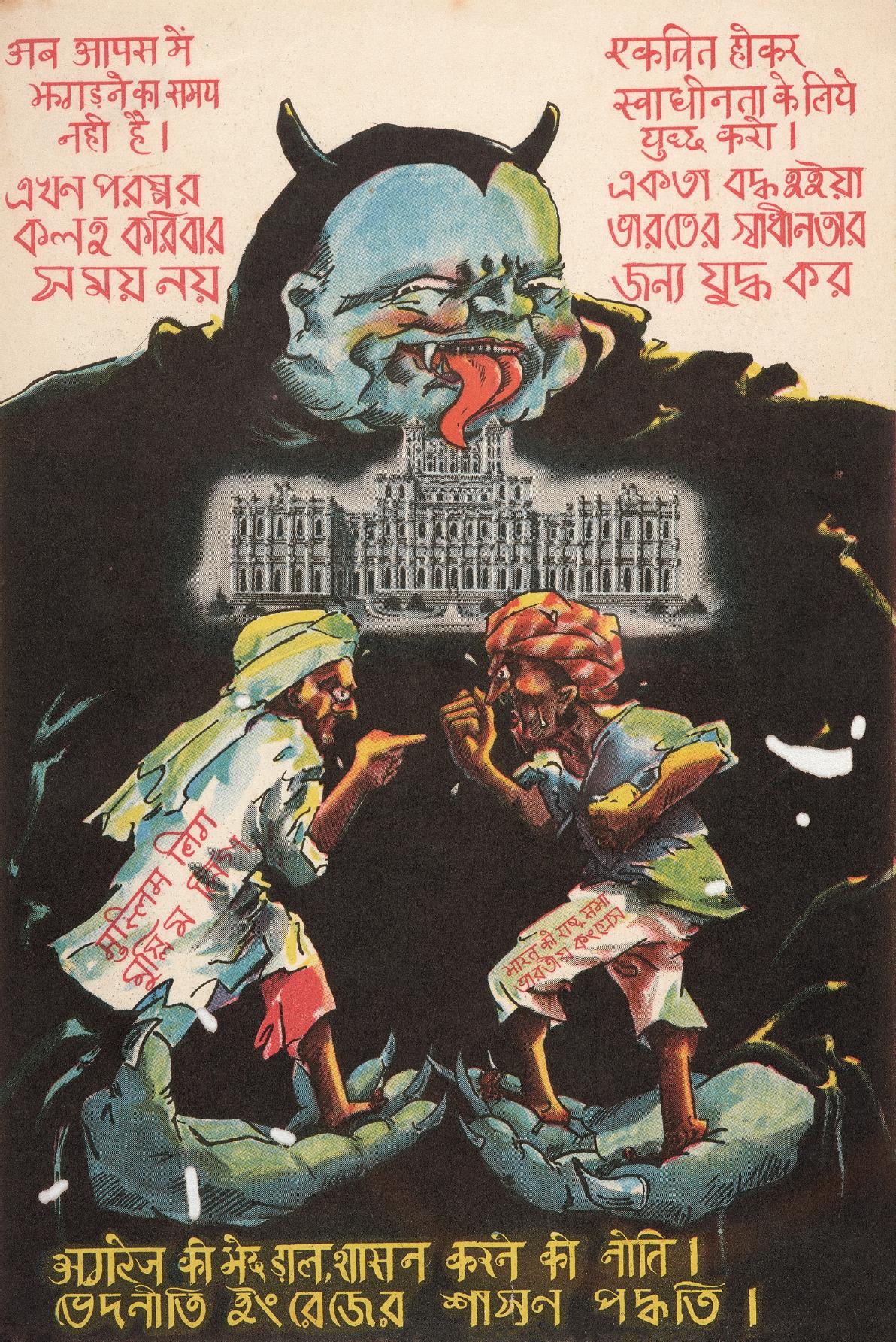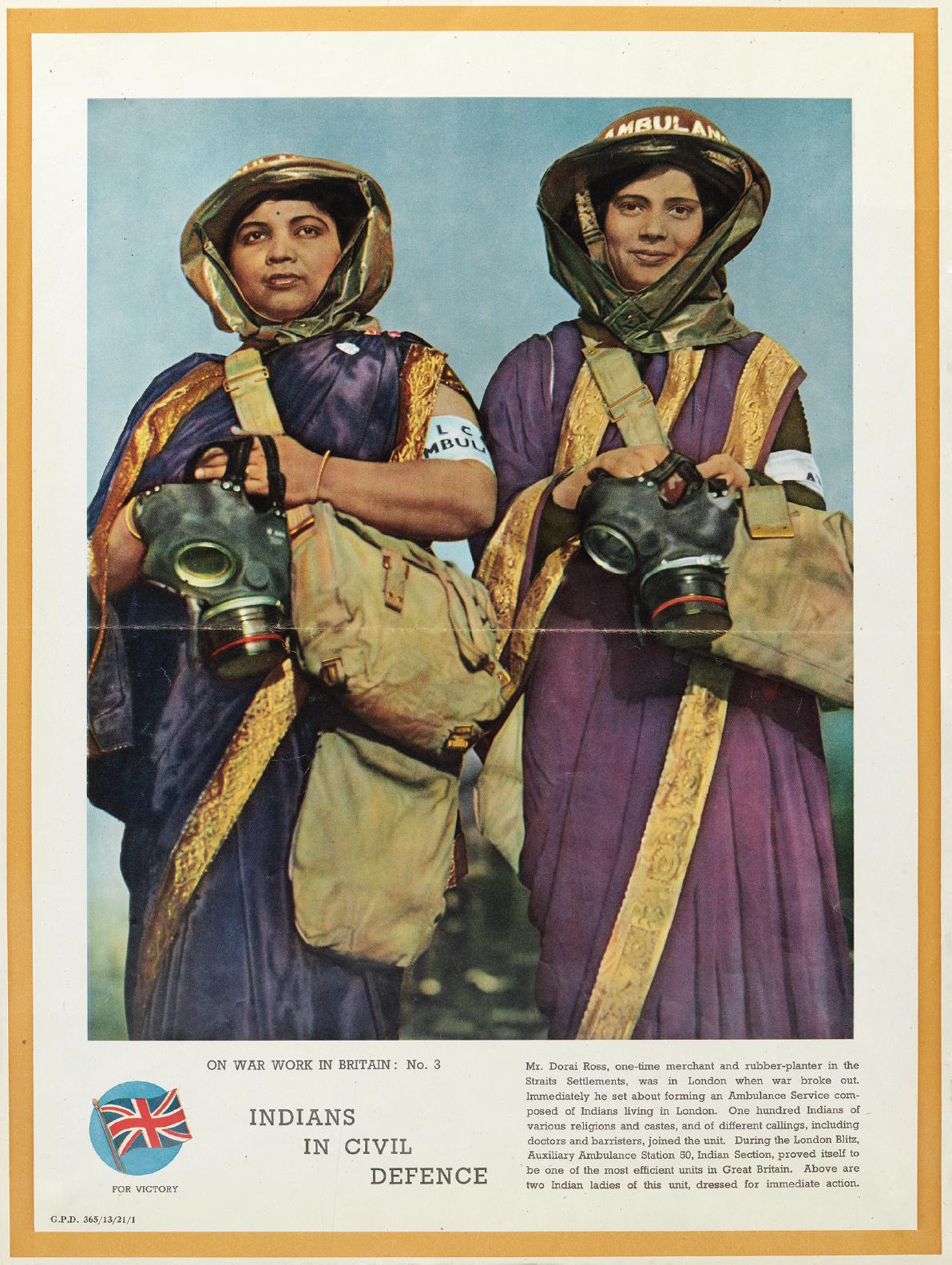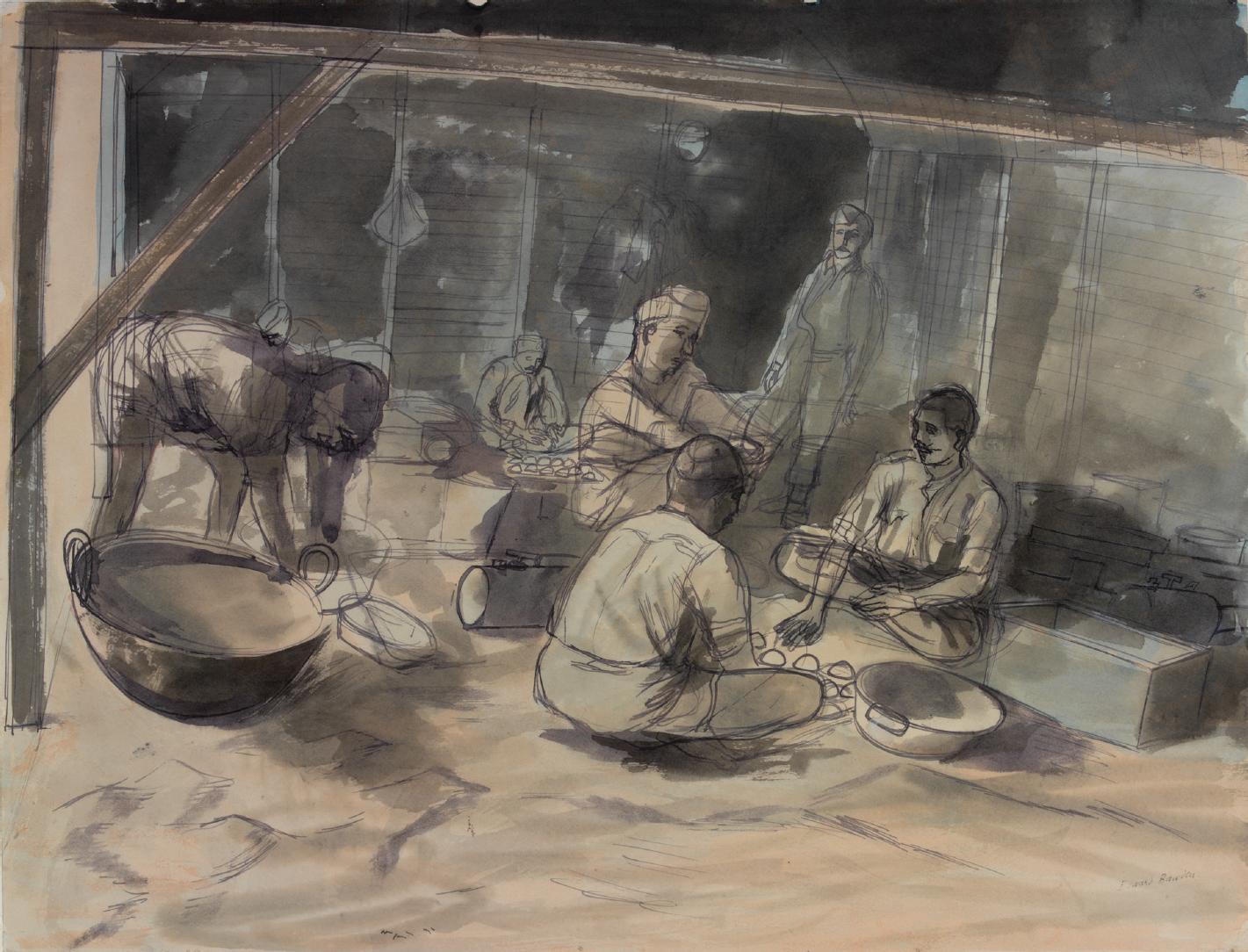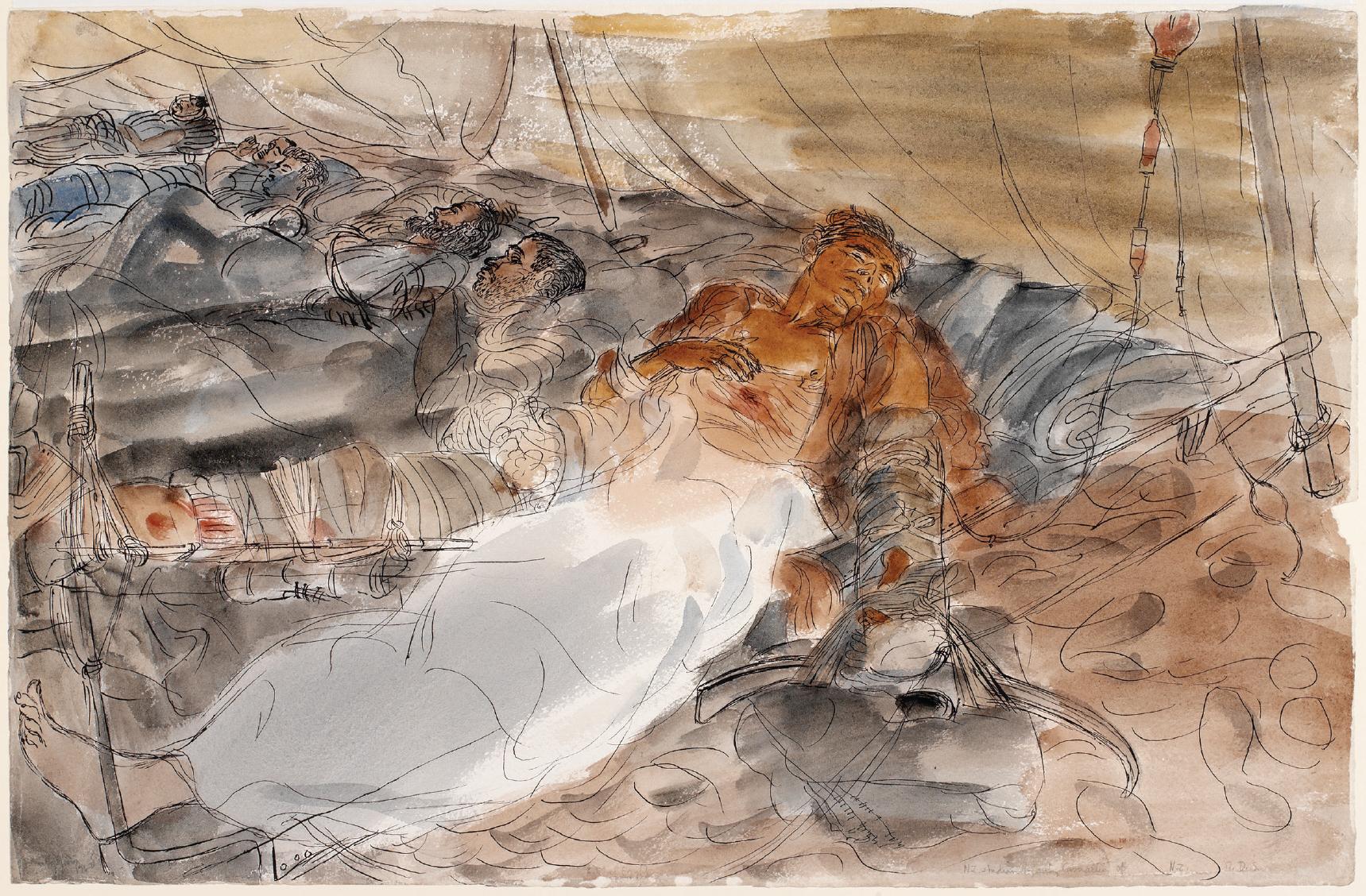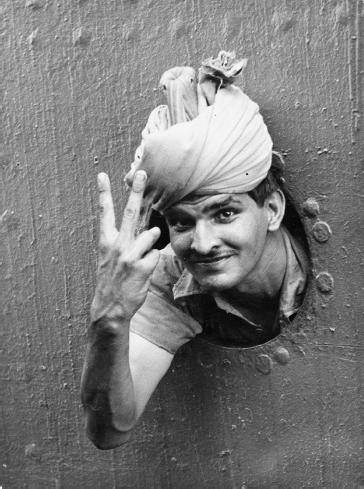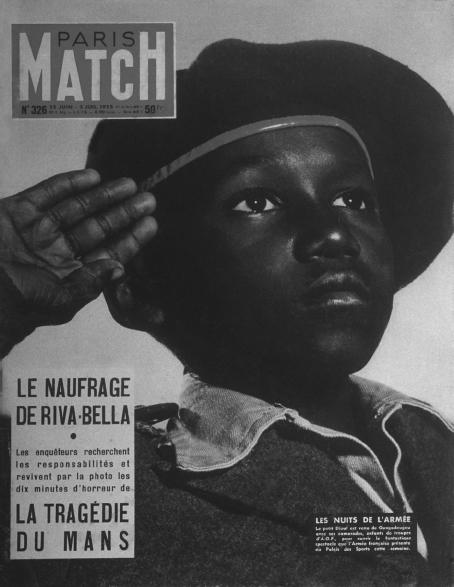DIYA GUPTA
India in the Second World War
AnEmotionalHistory
Oxford University Press is a department of the University of Oxford. It furthers the University’s objective of excellence in research, scholarship, and education by publishing worldwide.
Oxford New York
Auckland Cape Town Dar es Salaam Hong Kong Karachi Kuala Lumpur Madrid Melbourne Mexico City Nairobi
New Delhi Shanghai Taipei Toronto
With offices in Argentina Austria Brazil Chile Czech Republic France Greece
Guatemala Hungary Italy Japan Poland Portugal Singapore
South Korea Switzerland Thailand Turkey Ukraine Vietnam
Oxford is a registered trade mark of Oxford University Press in the UK and certain other countries.
Published in the United States of America by Oxford University Press 198 Madison Avenue, New York, NY 10016
Copyright © Diya Gupta 2023
All rights reserved. No part of this publication may be reproduced, stored in a retrieval system, or transmitted, in any form or by any means, without the prior permission in writing of Oxford University Press, or as expressly permitted by law, by license, or under terms agreed with the appropriate reproduction rights organization. Inquiries concerning reproduction outside the scope of the above should be sent to the Rights Department, Oxford University Press, at the address above.
You must not circulate this work in any other form and you must impose this same condition on any acquirer.
Library of Congress Cataloging-in-Publication Data is available Diya Gupta. India in the Second World War: An Emotional History. ISBN: 9780197694701
Printed in the United Kingdom
Ujjalendu Gupta (11 April 1952–12 October 2021)
To Baba, the luminous moon, without whom, nothing
Figs 1a and 1b: Colonial propaganda advertised the war as a training opportunity to learn crucial skills and become employable in a post-war, newly industrialised
India, c 1940s. See Introduction, p. 16. (Images courtesy of Jyotirmoy Bareria)
Figs 2a, b and c: Three Japanese propaganda pamphlets targeted at Indian people, with English translations by the author. These were likely air-dropped on the In-do-Burma border between 1943 and 1944.
a: ‘O sleeping elephant! Arise! Take this opportunity to break the chains that the English have imposed upon you, and become free!’ (© IWM, LBY K. Aerial 3 / 3896)
b: ‘A group of defeated nations whose destruction is inevitable is eyeing India’s natural wealth and riches. Do not be taken in by their beguiling and sweet words!’ Words written on the flag: ‘We accept your self-rule’. (© IWM, LBY K. 82/1516-2)
c: ‘This is not the time to fight amongst yourselves. Become united and fight together for your freedom! Creating division is the hallmark of English rule.’ Script on the men’s back and thigh: ‘Muslim League’ and ‘Indian National Congress’. (© IWM, LBY K. 82/1516-2)
Fig. 3: Two Indian women from the Auxiliary Ambulance Station 50, Indian Section, during the London Blitz, 1940s. (© IWM, Art.IWM PST 16288)
Fig. 4: ‘A Hindoo Kitchen’: Edward Bawden’s painting of the Royal Indian Army Service Corps in Zghorta, in modern-day Lebanon, 1940s. (© IWM, Art.IWM ART LD 2220)
Fig. 5: Anthony Gross’s painting of Indian casualties at a field hospital in Egypt in 1942. (© IWM, Art.IWM ART LD 2722)
CONTENTS
ListofIllustrations
Acknowledgements
Introduction: ‘V’ for Victory?
1. ‘The Thing That Was Lost’: Re-Conceptualising Home in Indian Life-Writing
2. ‘Every Day I Witness Nightmares’: Hunger and the Homeland
3. ‘Close to Me as My Very Own Brother’: Male Friendships in Indian War Writing
4. ‘An Anguished Heart’: Witnessing the Indian Home-Front
5. ‘Crisis in Civilisation’: How Poetry Becomes Testimony
Afterword
Notes
WorksCited
Index
LIST OF ILLUSTRATIONS
Embeddedimages
Fig. 0.1: ‘He gives the “V” sign from the porthole of a ship as he arrives at Singapore—and his “V” is backed by a million Indian troops and the rest of the Empire as well’. c.1 December 1941.
Fig. 0.2: Cover of Paris Match commented on by Barthes in Mythologies, 1957.
Fig. 1.1: ‘Village hero: New recruit on his first leave. A new recruit to the Indian Army arrives in his village on his first leave’, October 1943.
Fig. 1.2: ‘Recruiting for the war in northern India: Punjabi volunteers crowding round the gates of an Army recruiting office’, 1942.
Fig. 1.3: ‘The Ranis at target practice’, c. 1943–4.
Fig. 2.1: Sunil Janah, ‘Women queuing for rice during the Bengal Famine, Lake Market, Calcutta, 1943’.
Fig. 2.2: Sunil Janah, ‘Orphans waiting for Food at a FamineRelief Centre, Orissa famine, 1944’.
Fig. 3.1: ‘West African and Indian troops bathing in a stream’, c. 1944, Burma.
Fig. 3.2: ‘Recruiting for the army in South India. The Recruiting Medical Officer in Bangalore examining a candidate’s chest’, August 1942.
Fig. 4.1: ‘New Indian Army recruits boarding the train to join their units’, August 1942.
Fig. 4.2: ‘Parsi women taking a course of Air Raid Precaution (ARP) training at the Cusrow Baug Training School, Bombay. Stretcher bearers taking part in a demonstration’, 1942.
Fig. 5.1: Still from the silent film ‘Air Raid Dam-age, London, Indian AMPC’, November 1940.
Fig. 5.2: Still from the silent film ‘Air Raid Dam-age, London, Indian AMPC’, November 1940.
Platesection
Figs. 1a and 1b: Colonial propaganda advertised the war as a training opportunity to learn crucial skills and become employable in a post-war, newly industrialised India, c 1940s. See Introduction, p. 16. (Images courtesy of Jyotirmoy Bareria)
Figs 2a, b and c: Three Japanese propaganda pamphlets targeted at Indian people, with English translations by the author. These were likely air-dropped on the IndoBurma border between 1943 and 1944.
a: ‘O sleeping elephant! Arise! Take this opportunity to break the chains that the English have imposed upon you, and become free!’ (© IWM, LBY K. Aerial 3/3896)
b: ‘A group of defeated nations whose destruction is inevitable is eyeing India’s natural wealth and riches. Do not be taken in by their beguiling and sweet words!’ Words written on the flag: ‘We accept your self-rule’. (© IWM, LBY K. 82/15162)
c: ‘This is not the time to fight amongst yourselves. Become united and fight together for your freedom! Creating division is the hallmark of English rule.’ Script on the men’s back and thigh: ‘Muslim League’ and ‘Indian National Congress’. (© IWM, LBY K. 82/1516–3)
Fig. 3: Two Indian women from the Auxiliary Ambulance Station 50, Indian Section, during the London Blitz, 1940s. (© IWM, Art.IWM PST 16288)
Fig. 4: ‘A Hindoo Kitchen’: Edward Bawden’s painting of the Royal Indian Army Service Corps in Zghorta, in modern-day Lebanon, 1940s. (© IWM, Art.IWM
ART LD 2220)
Fig. 5: Anthony Gross’s painting of Indian casualties at a field hospital in Egypt in 1942. (© IWM, Art.IWM
ART LD 2722)
ACKNOWLEDGEMENTS
In writing about the history of emotions in India during a global war, I would like to start with my own. Most acknowledgements will let you know how books were born; this one will tell you how a book came nearly not to exist.
On 12 October 2021, I lost my father to Covid. Apart from medical staff, I was the last person to see him alive; he never returned home from the emergency ward. Living with that knowledge was like falling, slowly but surely, into an abyss. To use a war analogy, it felt as though an incendiary bomb had dropped on my world; as I lay helpless, I could only see the tatters of what had been a rich, whole and happy life. My old life, now unrecognisable. I did not think I would be writing again soon.
I returned to the UK from India at the end of November that year. My father travelled with me. I saw him everywhere—in my flat, on the Tube, on the train, walking next to me on the street. He had always liked London. One of my most vivid memories is of looking up from my desk at Senate House Library and seeing him smiling down at me. I was trying to take up the threads of work again, and felt happiness radiate from him. I could have reached out and touched him that day. He felt intimately, viscerally real.
Every darkness has its cradles of light, and so did mine. I remain particularly grateful to my friends Bárbara, Gary, Hannah, Faten and
Sinéad in the UK, and to Ushasi, Haimanti and Mahua in India for the love they showed me in those terrible days. I can recall a conversation I had with another friend, Mim, about the mysterious connections between us all—in life, death and beyond—and some wonderful email exchanges about loss with Philip Carter at the Royal Historical Society. All manner of people—friends and strangers alike were in touch, talking of experiencing similar sorrow or sharing the love they bore for my father. It was both a painful and extraordinary outpouring.
Thanks also to my bereavement counsellor who understood how much I was averse to the language of ‘healing’ or ‘being cured’ from grief. Losing my father is a wound that I will carry forever. In retrospect, acknowledging this was one of the first steps in being able to take up work on the book again. And, with this realisation, in turning once more to the craft of writing, there came a strange joy.
I cannot express enough regard for my postdoctoral mentor Matthew Hilton, my former PhD supervisor Santanu Das and the Royal Historical Society’s Race, Ethnicity and Equality Working Group co-chairs Sadiah Qureshi and Jonathan Saha for their unstinting support during this time. This book would not be published today without them. My thanks also to the readers of my chapters— Suzanne Bardgett, Anna Maguire, Mrinalini Sinha, Daniel Morse, Daniel Todman, Jonathan Saha, Supriya Chaudhuri, Santanu Das and Matthew Hilton—for their thoughtful and considered feedback, and to the two anonymous peer reviewers who so warmly advocated for this book’s publication with Hurst and Oxford University Press. Suchetana Chattopadhyay sent me wonderful reading suggestions, while Margot Finn looked through my book proposal in its draft stages and offered sage advice. I am very grateful to both.
It was at King’s College London that my doctoral research, on which this book is based, took shape, and I have fond memories of the collegiality and conviviality I enjoyed there. Thanks also to my external examiners Yasmin Khan and Elleke Boehmer for their careful consideration of my thesis and productive suggestions for transforming the PhD into a book. It is no exaggeration to say that
they helped me find my scholarly voice. And working on the Imperial War Museum’s AHRC-funded ‘Provisional Semantics’ project on colonial war photography in India during the Second World War enabled me to refine my thinking further. The project helped me to slow my scholarship down, to examine closely the presence of Indian men framed by the colonial lens. I found myself questioning— could visual culture tell us something that textual material could not?
This book is founded upon transnational archival work, which can be rewarding but also demanding and frustrating, even in pre-Covid times, and I am grateful to everyone who made this process smoother Sugata Bose for facilitating access to the Netaji Research Bureau in Kolkata, Jawhar Sircar for his networks and contacts, Sitanshu Kar and Nitin Wakankar for access to the Indian Ministry of Defence archives in Delhi, and archivists in the Private Papers section at the National Archives of India, Delhi. Staff at the British Library, Imperial War Museum, National Army Museum and the National Archives at Kew, as well as the Tagore Centre in London, have been incredibly generous with their time, and I thank them all.
Thanks are also due to all those engaged readers of my journalistic pieces on India and the Second World War, published online and in both India and the UK. I would particularly like to mention Arnab Bardhan Paul from Bangladesh, who sent me copies of the memoir Arakan Fronte and Baren Basu’s war novel Rangrut, revealing to me that cultural memories of this war in modern South Asia are far from forgotten. I would also like to thank Priyanka Basu and Farha Noor for their help in securing a wonderful translator for a Punjabi poem that I discuss in the Introduction. Ajmal Kamal did a nuanced English rendering of this challenging work, for which many thanks. I am grateful to Ghee Bowman for sharing this poem with me.
I have been extraordinarily fortunate in being able to interview Indian veterans of the war during the course of my research. Thanks to Air Commodore S.P. Singh in Delhi, and Pratapaditya Dasgupta, Jyotindra Mohun Nag and Helenia Daniel (the latter now sadly no more) in Kolkata for allowing me to speak to them about their
wartime lives. Geshe Graham Woodhouse, Kabir Saxena, Dipankar and Debanuj Dasgupta, Boudhayan Nag and Priyanka Biswas were enthusiastic organisers of these interviews—thank you!
A special thanks also to Aniket Mitra for telling me about his grandfather, Ajit Kumar Mitra, and his Second World War story right at the start of my research journey. This was truly an inspirational encounter. For all those in India and the UK who sent me photographs and private papers of their loved ones at war, and filled out my research questionnaire, many grateful thanks—these include Ujjal Maitra; Ritwick Mukherjee; Muhammad Abul Hay; Harish, Jayati and Parmanand Bhambhani; and Tehseen Gulzar.
Thanks are due to the Royal Historical Society and the Institute of Historical Research, both of which served as my intellectual home between 2020 and 2022, during the writing of this book, and to Past and Present for financially supporting my research. I am very grateful to Michael Dwyer at Hurst for responding to my book proposal with an acceptance in what seemed like record time! Lara Weisweiller-Wu has been a wonderfully patient and encouraging editor and Daisy Leitch efficient and resourceful in taking the book through the production process. Thanks also to Alice Clarke and Mei Jayne Yew for their help with everything book-related.
To my sister Poopsie and her husband Shobhit, thank you for all the encouragement and support in my writing journey. I fully trust that you will read this book from cover to cover! To Ma at home in Kolkata, I know how happy the publication of this book will make you. And to our pug Leo, thank you for all the playfulness and laughter you have brought us. I firmly believe that dog cuddles are an indispensable part of the academic writing journey, and this book is the better for all the dog hairs you have shed on me.
To my partner Shaun, thank you for everything, but most of all the music. I could not have written anything without your curated soundtracks to accompany my words. Sorry for going on about the war for nearly eight years now.
Finishing my first book has made me think of how my father had wanted to write his own. A very different one to this, but we had
discussed book proposals and writing tips. He was hugely supportive of my research, and very pleased indeed when my work was accepted for publication. Nothing suited him better than to ring me in the afternoon, to ask me how it was going and why I was taking so very long over each chapter. After all, didn’t writing just mean one word after another? This book is dedicated to him.
INTRODUCTION
‘V’ FOR VICTORY?
Fig. 0.1: ‘He gives the “V” sign from the porthole of a ship as he arrives at Singapore and his “V” is backed by a million Indian troops and the rest of the Empire as well.’ © Imperial War Museum.1
This photograph of an Indian soldier on board a troop ship to Singapore in the 1940s confronts us with a familiar gesture. The soldier thrusts his head and arm through the ship’s porthole and appropriates Winston Churchill’s well-recognised ‘V for Victory’ symbol with the fore and middle fingers of his right hand, although his palm faces inwards.2 This physical gesture punctures our Euroand US-centric memory of the Second World War with a non-white colonial presence. The soldier’s smiling, youthful face attests to the two-and-a-half million men from undivided India,3 the largest volunteer army in the world at the time,4 which served as the British Empire’s ‘greatest reservoir of military manpower’.5 This photograph belongs to a colonial archive, part of the British Ministry of Information’s collection at the Imperial War Museum, used for propaganda purposes in Britain and abroad. As its caption highlights, the photograph was taken to demonstrate the ‘loyalty’ and participation in the war of not just Indians but well over half-amillion Africans and several thousand West Indians, who served alongside men from the white Dominions—Australia, New Zealand, Canada and South Africa.6 These were imperial forces represented as fighting under a united flag, or symbol, in this case.7 But what does recreating the ‘V for Victory’ symbol mean to this Indian soldier in this photograph, particularly when there is no name provided in the caption—the soldier is simply referred to as ‘he’? How does he stake a claim to his own presence in, and emotions of, the Second World War? And is the soldier playing with this Churchillian symbol by deliberately inverting the ‘V’ sign as an obscene hand gesture, with his palm facing inward? Is it an ironic response to the colonial photographer’s demands, or performed as an an-ti-imperialist symbol?
This photograph shares similarities with another image, also related to Empire and war, although from a different context. In his
famous essay ‘Myth Today’ (1957), Roland Barthes illustrates the layers of myth-making contained in the object of his study, a photograph displayed on the cover of the magazine Paris Match portraying a young black soldier gazing upwards, saluting the French flag. Barthes’s analysis draws our attention to visual signifiers similar to those in the Indian ‘V for Victory’ photograph. He writes:
I see very well what it [the photograph] signifies to me: that France is a great Empire, that all her sons, without any colour discrimination, faithfully serve under her flag, and that there is no better answer to the detractors of an alleged colonialism than the zeal shown by this Negro [translator’s word] in serving his so-called oppressors.8
Barthes recognises how French imperialism seeks to reduce the saluting black soldier to ‘nothing more than an instrumental signifier’,10 yet the very ‘naturalness’ of this implied meaning is suspect. The photograph, rather literally in this case, gestures us instead towards the constructed, ‘fabricatedquality of colonialism’.11 Barthes also notes why the saluting black soldier cannot simply function as an instrument of empire in the photograph—‘he has too much presence’.12 It is this overflow of ‘presence’, in all its tangled and complicated forms, that I recover and analyse in this emotional history of undivided India in the Second World War.
Fig. 0.2: Cover of Paris Matchcommented on by Barthes in Mythologies.9
While the ‘V for Victory’ symbol dominated the Indian political landscape during the war years, the Indian Army grew ever more corpulent, swelling to two-and-a-half million men. In October 1939, the Indian Army comprised 194,373 troops, and by August 1945, its size had increased to 2,065,554.13 The numbers peaked in May 1944 at 2,668,470.14 In parallel, the Royal Indian Air Force grew from 285 officers and men to 29,201 officers and men, with nine squadrons, while the Royal Indian Navy expanded from 1,846 men to
comprising 30,748.15 Of the 2,499,909 men serving in the Indian Army between 3 September 1939 and 31 August 1945, 2,038,001 were classified as combatants.16 By the end of hostilities in August 1945, an estimated 74,992 had been killed, 64,354 were injured, 11,754 were missing and 79,489 had been taken prisoners of war.17 And, during these war years, India became a wartime industrial production house and suffered acute shortages in grain, kerosene, cloth and other essential items.18 But did the people of India believe this war to be their own? Contested feelings pushed against one another, particularly after Japan’s rapid military takeover of Britishoccupied territories in Southeast Asia by May 1942. Songs composed by the Indian People’s Theatre Association (IPTA), established by the Communist Party of India in 1943, proved extremely popular among impoverished peasants from Bengal, particularly sharecroppers, as a response to their plight caused by global war:
Okishan,torghoreagun,bairejetoofan. Bideshisarkarghore,duareJapaan(p. 223).
O farmer, your home is on fire, and outside a typhoon rages.A foreign government occupies your home, and on your doorstep is Japan.19
While British colonialism is symbolised here by fire—a theme I take up in this book—the ferocious threat of external invasion from the east is represented by the imminent typhoon. Both colonialism within India and imperialism without are seen as ravaging, destructive forces, as anticolonial and anti-capitalist emotion here surges against anti-Japanese sentiment. Yet another folk song highlights a community of lamentation formed among Bengali women left behind at home while their men join the imperial war effort:
Chatignayerangagomati, Otorbhaiyerkachhelikhchhichitthi. Gunernanadgo,torbhaigeloboideshe,
